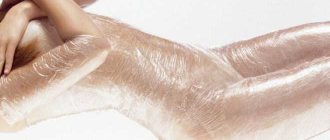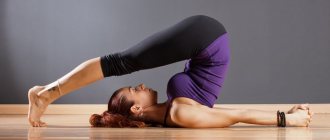Types of walking
Walking can be different: walking, recreational, Scandinavian and, finally, sports. They all differ in speed, but perhaps only race walking has its own unique style.
Race walking differs from other types in the intensity of the load: at short distances it involves an oxygen debt, while other types of walking are unlikely to make you unable to speak while moving.
In ordinary fitness practice, race walking is not very popular; it acts as a professional activity. To lose weight and tone, amateurs resort to health-improving and Nordic walking, thanks to their accessibility and simplicity.
Read on the topic: Nordic walking with poles: benefits, technique, beginner mistakes
source: olympicchannel.com
Kinds
We studied what race walking is and how to walk correctly, but did not consider its varieties. Let's list them briefly:
- Slow pace - speed is approximately 80 steps per minute;
- Medium - 120 steps per minute;
- Sports - 150 steps per minute. At this speed, 1 kilometer travels in 7 minutes. This is the pace that is considered ideal for participating in long-distance competitions;
- Fast pace - it is practiced only by experienced athletes, their average speed reaches 10-16 km/h.
Story
Race walking has a long history: the first race of speed walkers took place in London in 1882. But long before this, similar events existed, although they were organized like modern ultramarathons.
In mid-19th century New York, professional speed walkers competed around the clock, but were allowed to eat or rest. The participant who covered the greatest distance in six days was declared the winner.
Race walking entered the family of Olympic sports in 1904, but not at all in its current form. Walkers competed over short distances. In 1908, these were 1500 m and 3000 m. In 1912, athletes already walked 10 km, and the 50-kilometer distance took its place only in 1932. The 20-kilometer race was included in the program in the mid-20th century - in 1956.
The third significant year for this sport was 1992, and all because it was from that time that women were able to participate in races, but they only walked 10 km, athletes were allowed to 20 km only in 2000, but the 50-kilometer Women still don’t run the distance at the Olympics.
Women were able to try their hand at 50 km for the first time in 2017. Then the IAAF Council decided to include such a race for women at the World Athletics Championships in London.
The latest news from the IAAF suggests that major changes will soon be taking place in the Olympic history of race walking again. It was planned that the 2020 Games would be the last for the 50-kilometer competition, and from the next Olympics, walkers would compete for medals at 10, 20, 30 or 35 km.
general information
Race walking is one of the disciplines in athletics. It has certain features of simple walking, but is distinguished by its productivity, technical complexity and lower energy consumption.
The first competitions of athletes in this sport were held in 1882 in London, and in 1932 race walking became part of the Olympic disciplines in athletics. In the competition, the men's distance is 50 km, the women's - 20 km.
A distinctive feature of the competition is that the athletes are controlled by judges throughout the entire distance. The number of judges is from 6 to 9, they hold two yellow spatulas (flags) in their hands and analyze the technique of each participant. A wavy line is drawn on one of the shoulder blades, it indicates that the athlete has come off the surface or has lost contact with the ground, on the second shoulder blade there are 2 lines at an angle of 150 degrees - it signals that the supporting leg, which was brought forward, was bent at the knees . After warning the athlete, the judge sends a red card to the head judge, after receiving 3 red cards from different judges, the participant is disqualified. The chief judge has the right to disqualify an athlete in the last sections of the distance. At the Olympics or World Championships, the execution technique can only be violated once.
How does race walking differ from regular walking?
Normal walking is 4-5 km/h, up to 100 steps per minute. A pedestrian is considered to be walking fast if he moves at a speed of about 6 km/h, taking about 120 steps per minute. In race walking, the speed of movement can be safely said to be running.
Professional athletes are able to walk for a long time at speeds of more than 16 km/h. And their step frequency is the same as that of 800-meter runners, that is, more than 200 steps per minute.
Of course, a walker cannot be confused with a pedestrian based on their body movements. The walker actively works with his arms and pelvis bent at the elbows, he does not bend his forward leg at the knee, and his step can exceed 1 m in length, while in walking the step length usually does not exceed 70 cm.
Execution technique
During race walking, a person's speed in km per hour is approximately 10 km/h, and professional athletes can accelerate to 16 km/h. Competitions are usually held in open areas, and if weather conditions do not permit, in an indoor stadium or arena. If you are wondering whether it is possible to practice race walking to lose weight at home, we will answer that it is advisable to still practice outside. You have to understand, you have to have enough space to accelerate, but if your square footage allows it, go for it. After all, this is a great alternative to running for weight loss.
So, now you know how race walking differs from regular walking, and now let’s look at the main points of the correct technique for performing it:
- When starting, the body is held straight, the gaze is directed forward;
- The arms are bent at the elbows at a right angle and held freely, without tension. During the movement, the hands help the athlete, moving in time with the steps, back and forth;
- It is important to follow the rule of touching the floor with one foot - if a separation of both legs is recorded, you will be removed from the competition;
- The leg on which you plan to take a step must be strictly straight until the foot touches the surface of the ground. Sharp knees during a step are a strict violation of technique.
These are all the basic requirements for technology. Let's continue our study of race walking with weight loss techniques for beginners, namely, how to lose weight using this discipline.
Rules in race walking
Race walking is a type of athletics where judges, or referees, watch the athletes as vigilantly and evaluate their technique as strictly as judges in figure skating.
If in running no one disqualifies an athlete for tightly clenched fists or throwing his head back, in general, for errors in terms of economical running technique, then in race walking 6 to 9 judges monitor the correctness of the technique.
When an athlete loses contact with the ground, the judges show him a card with a wavy horizontal line, and when the walker's leg suddenly becomes bent, he will see a card with two segments connected at an angle of 150 degrees.
Warning cards are painted yellow. Disqualification - red card. But the catch is that, having violated it once, the athlete will no longer see the error signal repeated, even if he makes one. The judges, noticing repeated violations, will send red cards to the chief referee, who will disqualify the athlete if he receives three red signals from three different judges.
source: olympicchannel.com
The judges are usually located on difficult sections of the course. For example, on descents, where with a natural increase in speed you can make a mistake and start running. That is why on the slopes, walkers, on the contrary, slow down their speed, reducing their step length.
The problem is that judging is done by eye and can sometimes be subjective. The IAAF is currently focusing on the development of electronic chip insoles (RWECS) technology. This technology will automate the control of the athlete’s foot contact with the ground. It was reported that testing is planned to begin during 2020.
Rules and techniques of race walking
The basic rules of race walking are “steady step” and “not bent, walking leg.” In order to understand this, you need to understand the basics of race walking techniques. As in regular and race walking, the step technique is based on alternating one and two supports.
One support is when a person leans on one leg (it is completely straight and has a vertical position) and the second leg is extended in order to take a step. It should be in a bent position and the hip should go forward and up, while the supporting leg remains straight, but in an inclined position.
The next stage is two supports, at the moment when the walking leg straightens and places the heel on the surface, the supporting leg still rests its toe on the surface. This phase lasts for hundredths of a second and will decrease as speed increases. After a moment, the athlete leans on one leg extended forward.
The last stage - the “former” supporting leg becomes the fly leg, it is carried forward, the foot is not high above the ground, it moves forward with the thigh up and the thigh, having reached a certain height, begins to fall and at the same time the lower leg moves forward, the heel touches the ground, at this moment the leg becomes absolutely straight and the swing leg becomes the supporting leg again.
The athlete's torso should be in an upright position or he can lean forward slightly; a strong torso tilt can lead to a greater chance of running. During race walking, due to rotation of the shoulders and pelvis in different directions, a slight twisting of the torso occurs.
The race walking technique is based on the absence of a flight phase (this is when both legs lift off the ground). This phase exists only in running, and when walking quickly, a person begins to use it unnoticed, to avoid speed when pushing off, do not use the “quadriceps hip extensor” - this is the strongest muscle of the thigh. In addition, the walker is helped to walk “correctly” by the movements of the pelvis - around the vertical axis forward and backward.
Distances in race walking
Unlike running disciplines, race walking does not have such a range of distances. There are only 6 of them, and only 5 distances are available for women.
Outside the stadium:
- men – 5 km, 20 km, 35 km, 50 km;
- women – 5 km, 20 km, 35 km.
Outdoor stadium 400 m:
- 3000 m;
- 5000 m;
- 10,000 m.
Read on the topic: Athletics disciplines
Weekly goal and change of pace
Following this plan and combining walking, strength training and stretching will help you burn 300 calories a day. Walking 3 times per week, strength training 2-3 times per week, and flexibility exercises 2 times per week (or more) are recommended, but the plan should be adjusted based on your current fitness level and schedule. Do 4 sets and watch yourself get stronger each week.
Walking with changes in pace (30-40 minutes)
Start walking at your normal speed for 5 minutes to warm up your body, then do interval training for 20-30 minutes using a 2/2/1 pattern.
- 2 minutes: Walk at a brisk pace at a steady pace (intensity 5 out of 10, you should be able to speak but your breathing is rapid)
- 2 minutes: move at a fast, steady pace (intensity 7/10, you should be able to answer questions, but not have a full conversation)
- 1 minute: increase the speed as much as you can, swing your arms to increase the speed (intensity: 8/10, should be challenging but doable within 60 seconds)
Endurance training: walking at a constant pace (40-50 minutes)
Start by walking at a normal pace for 5 minutes to warm up your body, then continue at a fast pace (intensity 5-6) for 30-40 minutes. Rest for 5 minutes and walk at a normal pace to restore your breathing and heart rate (you can finish the workout with a full-body stretch)
Strength training (20-30 minutes)
Perform exercises to increase strength, use dumbbells, fitness bands or other sports equipment that you prefer.
A good way to break up your walking, strengthen your muscles, and burn more calories is to incorporate exercise into your workout. Two or three times a week will be enough. Just stop and do one of these exercises while you walk. How many approaches you do is up to you:
Push-ups (do them from a park bench or from a wall to make it easier)
Squats: Bend your knees 90 degrees
Walking lunges
Classic and side plank
Stretching (3-15 minutes)
Stretching can be done immediately after walking if you can, or at any other time. Focus on stretching your entire body, paying special attention to areas of the body with tight muscles.
Leisure
Take a break from your workouts by stretching, gardening, cycling, or walking around the neighborhood. You are resting, but you are on the move.
Race walking and running: what's the difference?
Constant contact of the foot with the surface is what makes race walking different from running. This technical point is assessed by the judges at the distance, and for the running “flight phase” the athlete receives a warning, and if the technique is repeatedly violated, he is disqualified.
It is impossible to imagine running without bending your knees when moving your hips forward, but in race walking the strict rule is to keep your legs straight until your feet touch the track. If the judge notices sharp knees on a walker, this will be considered a serious violation of technique.
From the point of view of how the body works, running and race walking are also different. Walking is less dangerous than running: the load on the joints is much less, and the load on the heart is also lower.
But in terms of speed of movement, race walking is not too different from running, especially from amateur running. In the next paragraph you can see at what pace an athlete must go in order to achieve the title of Master of Sports.
Differences between walking and running
In the article we will look in detail at the benefits and harms that race walking provides for the body, but first, let’s figure out how it differs from running.
- Technique for performing the exercise. During movement, one leg of the athlete is always in contact with the surface of the ground, and this condition is stipulated in the rules, and its violation during competitions entails disqualification. While running, after a push, both legs for a short period of time, as if in flight, do not touch the floor.
- The starting position of the runner differs - in our version the torso is held straight, and when running a low start is allowed;
- The position of the legs changes during the exercise - when running, the legs are bent at the knees; when racing walking, the athlete must step on a straight leg;
- Of course, the speed of movement varies - professional runners reach a maximum speed of 30 km/h, while the average speed of a sports step is 10-12 km/h.
We recommend watching video lessons on race walking techniques - they can be found on Youtube or any other video hosting site. This way you can clearly see how professional athletes walk.
Walking speed
Perhaps, looking at the time it takes walkers to walk, for example, 20 km even in the 1st category, many will be surprised, because the men's 1 hour 42 minutes (05:06 min/km) is not too far behind the amateur half marathon.
Yes, race walking evokes admiration for its speed, because most of us are accustomed to the word “walking” in a different speed sense. To qualify for the title of international master of sports, a male athlete must walk 20 km at an average pace of 04:05 min/km; for women, the minimum pace is 04:36 min/km.
At the “golden” distance - 50 km - the requirement for a first-class athlete is 06:18 min/km, but for the MSMK it is 04:36 min/km, but even the minimum required pace to get 1st category is amazing.
What’s even more amazing is the speed with which the Frenchman Yoann Dini set the world record in walking 50 km: he finished in 3:32:33, that’s 04:15 min/km or 14.1 km/h!
The benefits of walking for weight loss
Fast walking to tone muscles and lose weight is not only a pleasant walk after a working day to relieve nervous tension and find a good mood.
Regular walks in the fresh air improve not only psychological, but also physiological health.
Among the benefits of walking for weight loss are the following:
- Improving the condition of the respiratory system. When walking, the load on the respiratory system is activated, and the volume of circulating blood also increases. As a result, a person becomes resilient, the body reacts favorably to any load, and ensures optimal functioning of the heart and lungs.
- Strengthening the cardiovascular system. Increased activity on a regular basis helps increase blood flow, allows you to easily tolerate physical activity, and controls your heart rate. If you regularly devote at least 20 minutes a day to race walking for weight loss, you can prevent diseases of the cardiovascular system.
- Activation of the muscles of the lower extremities. It increases during walking, which helps stimulate blood flow in the legs. As a result, it is possible to prevent the development of varicose veins and also have a beneficial effect on the condition of venous valves.
- Improved muscle condition. Regular walking helps to increase metabolism in the muscles, they become resilient and strong, able to withstand loads.
- Walking helps break down fat deposits anywhere. If you spend 20 minutes every day walking at an average or sports pace, you can burn 100 kcal, gradually toning your body.
- Walking has a positive effect on men, preventing blood stagnation in the pelvic organs, preventing problems with potency. Also, with the help of race walking, you can extend your reproductive health for some time.
- Effective fight against osteochondrosis. Race walking promotes the formation of correct posture, as it has a general strengthening effect on the spine. People who practice walking every day are less likely to develop osteochondrosis.
- Accelerates metabolism, strengthens immunity. Sports movements have a positive effect on human metabolism and prevent the gastrointestinal tract from slowing down.
This is not the entire list of benefits of walking, which not only improves the functioning of organs and systems, but also promotes weight loss. The advantage of walking is that it has no contraindications. Walking is recommended at any age; the intensity of activity is controlled individually.
What muscles are involved in race walking?
In race walking, the arms and almost all muscles actively work, especially the leg muscles - the back of the thigh. To avoid premature fatigue, the athlete must relax those muscles that are not currently working. This saves the energy needed to finish quickly.
The importance of muscle relaxation is important due to the high frequency of steps, and in race walking this figure exceeds 200. Walking savings are achieved due to the ability to relax muscles that are not working at the moment.
The combination of alternating work and muscle rest requires precisely coordinated activity of the neuromuscular system. Learning to maintain double support on the surface at high speed is a task that takes many years for professional walkers. In order to achieve success in race walking, you need good coordination of movements, endurance, and flexibility.
Statistics show that an adult athlete spends 4-5 years training before he meets the standards of a candidate for master of sports or master of sports.
Difference from normal walking
Race walking differs from conventional walking technique, speed, step frequency and leg movements, namely:
- Place both lower extremities on support for a short time. Professional athletes may not have this position at all.
- Quite active work of the hip joints, which is not the case during normal walking.
- For greater speed, the supporting leg is fully straightened at the knee.
- The stride length is longer, and there are also active arm movements.
As for the speed, the maximum is 9 km/h, but beginners will still need to move at a lower speed of 5-7 km/h.
Reference! A person weighing 70 kg can burn 450 kcal per hour in an hour of race walking at maximum speed.
Walking shoes
As such, a separate category of running shoes designed for race walking is difficult to find. However, there are certain requirements for walker shoes:
- light weight;
- special shape of the sole: beveled low heel for quick contact with the surface and better repulsion;
- the sole should have a wide platform, which gives better stability and traction;
- good cushioning at the heel;
- The sole should not flex because walkers need more stability than runners, and an excessively flexing sole causes the hamstring muscle to lengthen.
Anyone can use a regular pair of running shoes, and most do, but there is still a brand of dedicated race walking shoes: Reshod.
Choose your walking technique
While walking, you need to watch your movements. Your back should be kept straight without tilting your body forward. The shoulders and chest need to be opened. Place the foot correctly on the heel, only then transferring the weight to the toes.
Watch your step - it should not be long, use frequent short steps. You should also actively work with your hands in the process. Bend your elbows and move them forward and backward as you move.
For convenience, you can take special sticks. Walking should be athletic and fast, so that fat reserves are burned more intensely.
Healthy race walking, and is it possible to lose weight with it?
We are used to seeing fans of recreational running, lovers of Nordic walking and skiing, but does race walking exist outside of professional sports?
Yes, but I must say that it is quite rare for any amateur to walk this way. However, people of any age can engage in this type of physical activity.
When starting to train, start with short distances and a slow pace to allow your body to get used to it. Up to 3 km will be enough for the first time. It is better to pay attention to your walking technique than to your mileage. For exercise, choose a stadium, park or forest paths, but not a treadmill in a fitness center. On the latter it is not possible to walk using the race walking technique.
We have already mentioned that race walking puts little strain on the joints and heart, which means that such activities can be recommended for people with a sedentary lifestyle.
Race walking is considered one of the safest sports, and for those engaged in recreational purposes it brings:
- combating stress;
- cardiovascular system training;
- increasing endurance;
- stabilization of the digestive system;
- muscle tone.
But before your first lesson, consult your doctor if you have any chronic diseases. For example, although there is no risk of common running injuries, race walking still puts a lot of stress on the ankles and hips.
Will I be able to lose weight?
If you follow your diet, of course. This is an energy-intensive form of physical activity, so calories will be burned quickly, helping you create a deficit. By the way, it is precisely because of the reduced load on joints and bones that doctors recommend race walking for overweight people.
Note that race walking is more dynamic than slow jogging, which means you can burn more calories. It is also good because it involves many muscles at once, and this is its advantage over regular walking.
Read next: How to start running: a complete guide to running for beginners
The benefits of race walking
As everyone knows, life is movement, so it is obvious to everyone that race walking is healthier than sitting or lying down. However, what is the benefit or advantage of this activity relative to other sports. So, let's figure out the benefits of race walking:
- This sport is easily accessible to most - all you need is the desire to go for a walk, comfortable sports shoes and clothing. It follows from this that this activity will not bring you additional costs.
- Gentle stress on joints (especially knees) and spine, unlike running. This is especially true for overweight people, because running is strictly prohibited for them due to the destructive effect on the joints.
- Walking is more natural for a person, without creating a feeling of violence against the body.
- This sports activity does not create such an intense load on the heart and blood vessels, which occurs when running long distances, i.e. walking does not cause hypertrophic changes in the heart muscle (“athletic heart effect”).
- Strengthens the entire immune system, increases a person’s resistance to various unfavorable factors - high and low temperatures, lack of oxygen, and even reduces the risk of developing cancer.
- Normalizes the functions of the central nervous system - in our time, stress has become an integral part of human life, because of it, sleep is disturbed, appetite disappears, apathy and depression develop. It perfectly functions as an antidepressant. In severe shocks, a person simply needs to walk a lot and for a long time to calm down.
Walking: Tips for Quick Weight Loss
Adapt the plan to suit your fitness level and schedule. If you're just starting out, you can reduce the number of classes per week and shorten their duration. Every week, train 1 day more or extend the session by 5 minutes to gradually increase the load without overworking. Tailor your plan to suit your needs and preferences to make it easier to stick to, because consistency is the key to achieving (and maintaining) results!
Remember that during strength training, fewer calories are burned, but muscles are pumped, i.e., more metabolically active tissue is formed (muscle tissue burns more calories at rest than fat). Don't worry if you don't burn 300 calories on your strength days, because you are making important changes to your body by doing this type of exercise, which helps change your body composition in the long term.
Use these tips to burn calories quickly and lose weight:
Walk more during the day
Brisk walking is the best way to keep fit. Stick to 30-45 minutes of walking per day.
Throughout the day, try to take an extra walk of 20 minutes a day or less whenever you can to help you reach your weight loss goal. Here are some tips to help you get started:
- Taking a walk before meals will help control blood sugar levels, prevent overeating and speed up your metabolism.
- If you need to move from one destination to another over short distances, then walk rather than use transport.
- If you're not in the mood or feel like you're on the verge of stress, taking a short walk will not only boost your mood, but also help you burn some calories.
- Do not use the elevator, but take the stairs.
Increase the intensity
Increasing your walking speed is one way to get your heart beating faster and burn more calories. Ohio State University scientists have found that alternating your speed while walking can help you burn 20% more calories than walking at the same pace.
When walking, take 30 seconds out of every 5 minutes and walk as fast as you can, but don't run. Do this type of activity before returning to your normal pace.
Conquer heights
Walking on hilly terrain is one way to incorporate intervals into your walk without creating agony. Walking uphill burns more calories and helps build lean body mass, which also helps speed up your metabolism.
If there is no such area nearby, and you cannot afford to exercise 2-3 times a week, then try to walk up the stairs or exercise in the gym on a treadmill with an increased incline angle.
Remember to change your technique a little. When lifting, lean forward, take shorter steps, and bend your knees more than usual.
Use your hands
Even though it may seem silly, swinging your arms as hard as you can will provide extra benefits. It will help you increase your speed, work your whole body, and burn 10% more calories compared to your normal arm swing.
Use the following tips to help you curl your arms correctly:
- Bend your arms 90% and maintain this shape.
- The arm should extend behind the body as far as you can naturally and naturally.
- On the way up, your arm should rise to chest level.
Set a goal
Setting goals is important to maintain motivation. One goal could be to increase the steps taken per day. The more you walk in a day, the more calories you will burn. Reducing your stride size to take more steps can help speed up your pace.
Increasing the number of steps is safe, unlike distance and speed, which if increased too quickly can cause injury. If you're serious about losing weight, start with 10,000 steps and add as many steps as you can get to that number.
Sources:
- https://www.ncbi.nlm.nih.gov/pmc/articles/PMC3406229/
- https://blog.myfitnesspal.com/walk-in-the-fat-burning-zone-to-blast-belly-fat/
- https://blog.myfitnesspal.com/4-week-power-walking-plan-weight-loss-2/
- https://blog.myfitnesspal.com/4-common-walking-mistakes-that-lower-your-calorie-burn/
- https://blog.myfitnesspal.com/7-walking-tips-to-lose-weight-faster/











